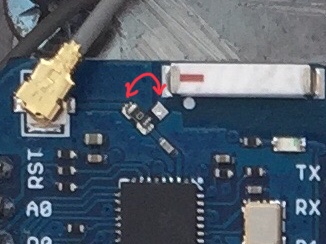It’s a bit fiddly to swap the zero ohm resistor, because the resistor tends to stick to the tip of the soldering iron so you need to use tweezers to hold it in place.
However, because it’s just a bridge between two contacts then it could be replaced with a (very) small piece of wire.
The resistor needs to be turned 90° from the pad near the rectangular ceramic antenna to the one near the antenna connector like this…

Pete.